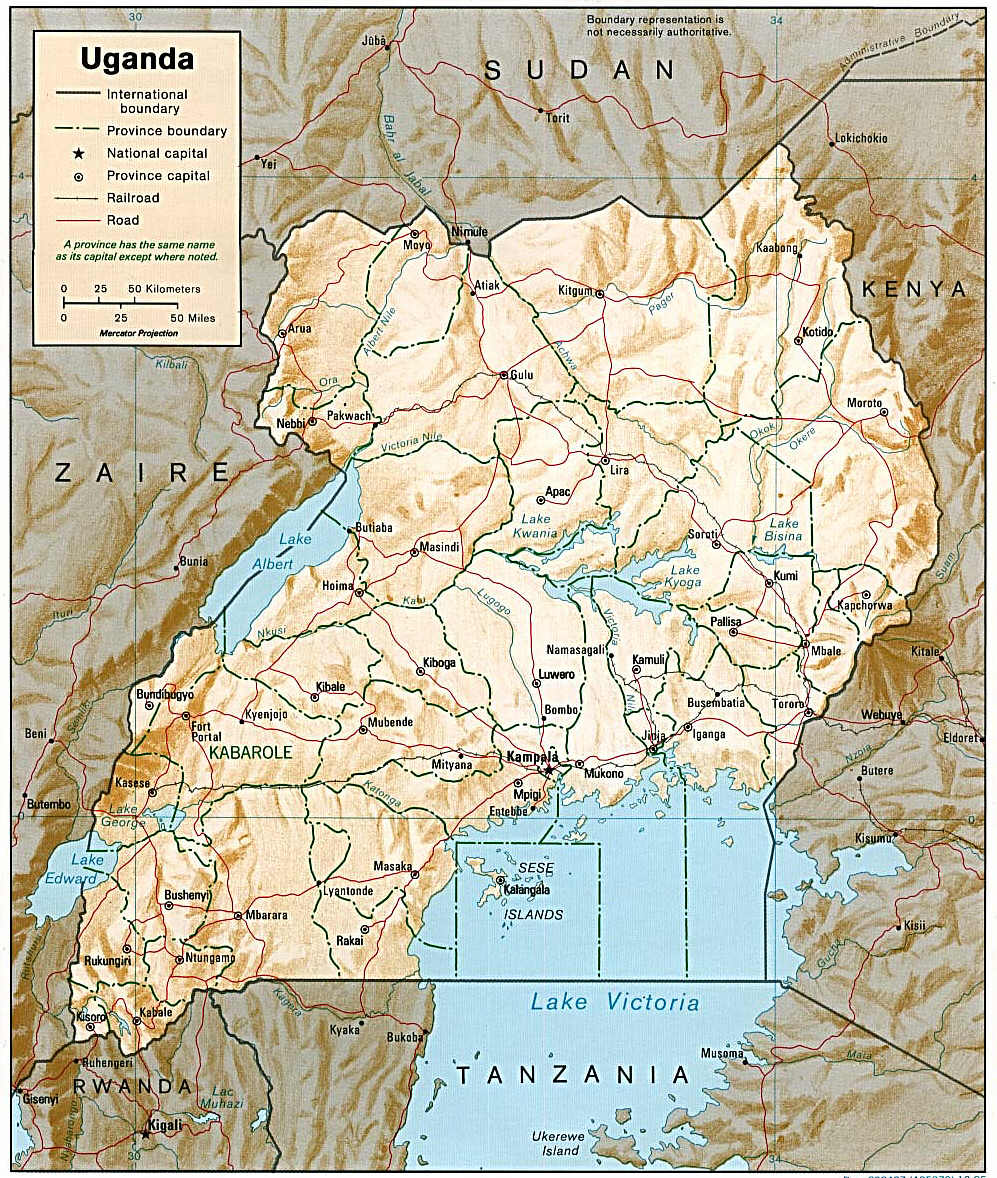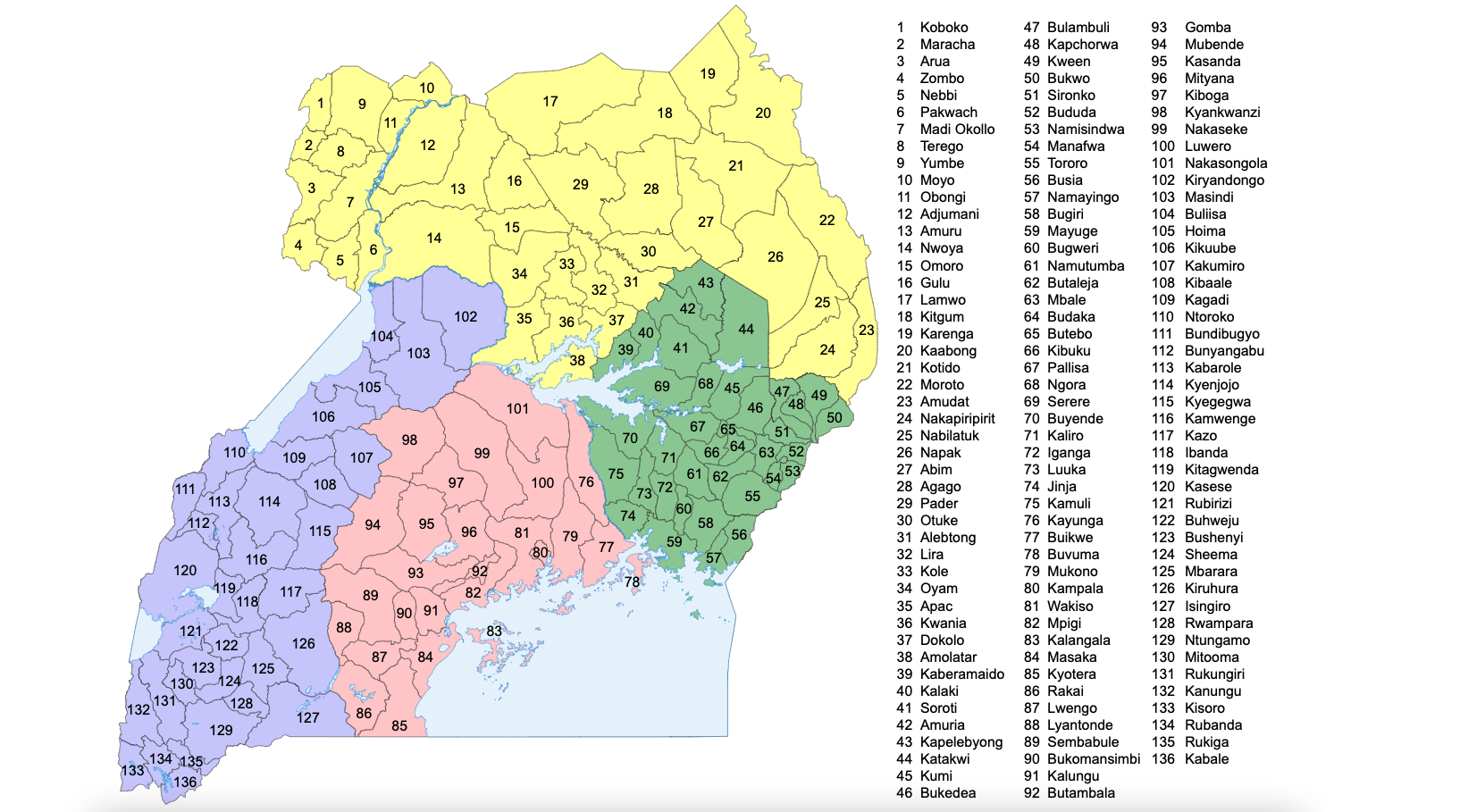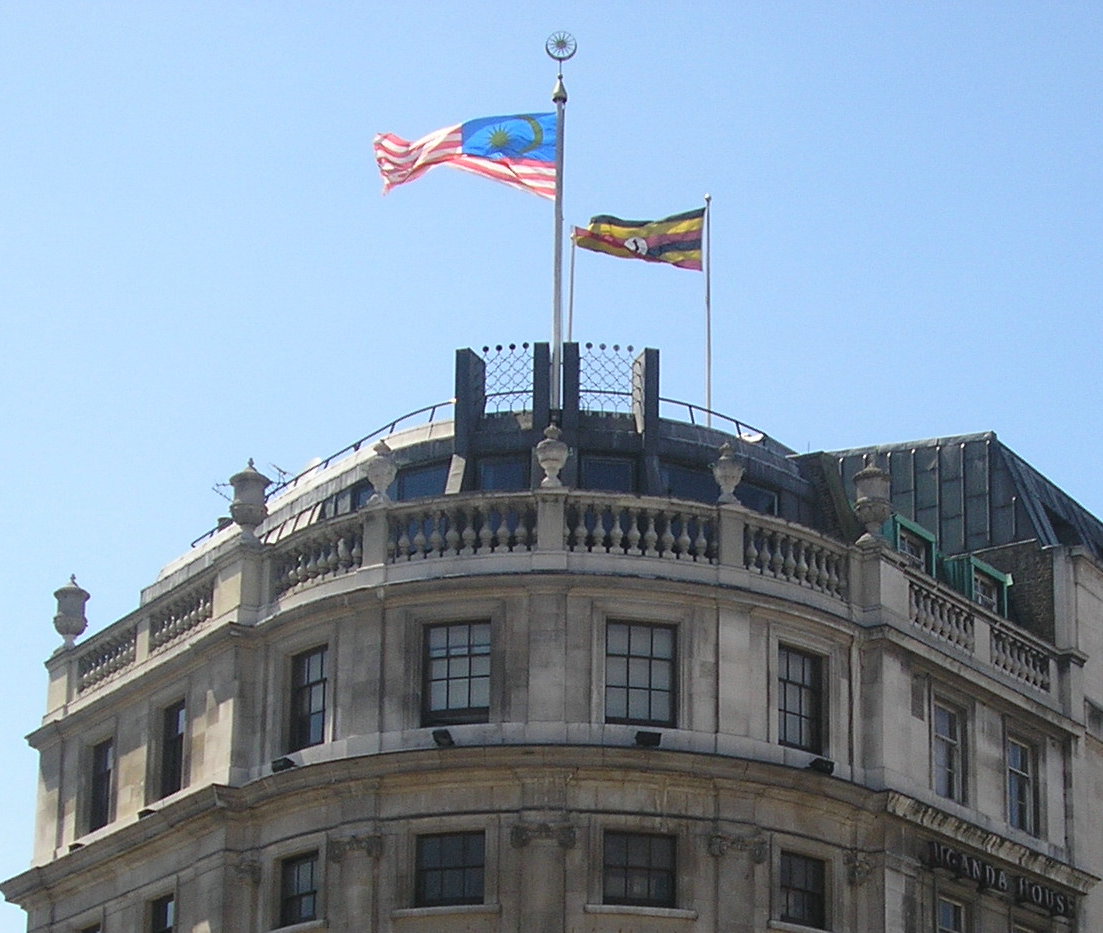|
Luweero
Luweero is a town in the Central Region of Uganda. It is the main municipal, administrative, and commercial center of Luweero District. History In 1982, in the Ugandan Civil War, Milton Obote's soldiers raided their village, from Kampala. Location Luweero is approximately , by road, north of Kampala, Uganda's capital and largest city, on the highway to Masindi. The road is a busy, all-weather tarmac highway. The coordinates of the town are 0°49'59.0"N, 32°29'58.0"E (Latitude:0.833056; Longitude:32.499444). Overview Luweero is one of several municipalities in Luweero District. Population The population of the town of Luweero was estimated at 23,500 during the 2002 national census. In 2010, the Uganda Bureau of Statistics (UBOS) estimated the population at approximately 28,800. In 2011, UBOS estimated the mid-year population at 29,500. During the national population census of 2014, the population was enumerated at 42,734. In 2015, UBOS estimated the population of Luweero Tow ... [...More Info...] [...Related Items...] OR: [Wikipedia] [Google] [Baidu] |
Luweero District
Luweero District (also spelled as Luwero) is a district in the Central Region of Uganda. Luweero is the site of the district headquarters. Location Luweero District is bordered by Nakasongola District to the north, Kayunga District to the east, Mukono District to the southeast, Wakiso District to the south, and Nakaseke District to the west. The district headquarters at Luweero are approximately , by road, north of Kampala, Uganda's capital and largest city. The coordinates of the district are 00 50N, 32 30E (Latitude:0.8333; Longitude:32.500). Overview Luweero District was the site of a fierce insurgency by the rebel group National Resistance Army and a brutal counter-insurgency by the government of Milton Obote, known as the Luweero War or the "Bush War", that left many thousands of civilians dead during the early to mid-1980s. The area affected by the war has come to be known as the Luweero Triangle. In 2005, Nakaseke County was split from Luweero District to form Nakas ... [...More Info...] [...Related Items...] OR: [Wikipedia] [Google] [Baidu] |
Luwero Triangle
The Luweero Triangle, sometimes spelled Luwero Triangle, is an area of Uganda north of the capital Kampala, where, in 1981, Yoweri Museveni started the guerrilla war that propelled him and his National Resistance Movement into power in 1986. The area was notorious for the persecution of civilians during the Luweero War, between the rebel National Resistance Army and the government of Milton Obote. Many residents were either forcibly recruited or killed by both sides during the five-year Ugandan Bush War, as Museveni's guerrilla forces started their advance from Kyankwanzi southeast toward Kampala. The following Buganda districts constitute the Luweero Triangle: * Kiboga District * Kyankwanzi District, formerly part of Kiboga * Nakaseke District, formerly part of Luweero * Nakasongola District, formerly part of Luweero * Luweero District * Mubende District * Mityana District, formerly part of Mubende * Wakiso District, formerly part of Mpigi See also * Luweero District ... [...More Info...] [...Related Items...] OR: [Wikipedia] [Google] [Baidu] |
Roman Catholic Diocese Of Kasana–Luweero
The Roman Catholic Diocese of Kasana–Luweero ( la, Kasan(us) – Luveerin(us)) is a diocese located in the cities of Kasana and Luweero in the Ecclesiastical province of Kampala in Uganda. History * 30 November 1996: Established as Diocese of Kasana – Luweero from the Metropolitan Archdiocese of Kampala. Leadership * Bishops of Kasana–Luweero (Latin Church) ** Bishop Cyprian Kizito Lwanga (30 November 1996 – 19 August 2006), appointed Archbishop of Kampala ** Bishop Paul Ssemogerere (19 August 2008 – 9 December 2021. Appointed Archbishop of Kampala. See also *Roman Catholicism in Uganda *Luweero Luweero is a town in the Central Region of Uganda. It is the main municipal, administrative, and commercial center of Luweero District. History In 1982, in the Ugandan Civil War, Milton Obote's soldiers raided their village, from Kampala. Loca ... References External links GCatholic.org Roman Catholic dioceses in Uganda Christian organizations established i ... [...More Info...] [...Related Items...] OR: [Wikipedia] [Google] [Baidu] |
Ugandan Bush War
The Ugandan Bush War, also known as the Luwero War, the Ugandan Civil War or the Resistance War, was a civil war fought in Uganda by the official Ugandan government and its armed wing, the Uganda National Liberation Army (UNLA), against a number of rebel groups, most importantly the National Resistance Army (NRA), from 1980 to 1986. The unpopular President Milton Obote was overthrown in a coup d'état in 1971 by General Idi Amin, who established a military dictatorship. Amin was overthrown in 1979 following the Uganda-Tanzania War, but his loyalists started the Bush War by launching an insurgency in the West Nile region in 1980. Subsequent elections saw Obote return to power in a UNLA-ruled government. Several opposition groups claimed the elections were rigged, and united as the NRA under the leadership of Yoweri Museveni to start an armed uprising against Obote's government on 6 February 1981. Obote was overthrown and replaced as president by his general Tito Okello in 19 ... [...More Info...] [...Related Items...] OR: [Wikipedia] [Google] [Baidu] |
Central Region, Uganda
The Buganda region is one of the four regions in the country of Uganda. As of Uganda's 2014 census, the region's population was . It is coterminous with the Kingdom of Buganda, one of the ancient African monarchies that are constitutionally recognised in Uganda. Districts , the Central region contains 24 districts A district is a type of administrative division that, in some countries, is managed by the local government. Across the world, areas known as "districts" vary greatly in size, spanning regions or counties, several municipalities, subdivisions o ...: References External links Google Map of the Central Region of Uganda {{Authority control Regions of Uganda ... [...More Info...] [...Related Items...] OR: [Wikipedia] [Google] [Baidu] |
Milton Obote
Apollo Milton Obote (28 December 1925 – 10 October 2005) was a Ugandan political leader who led Uganda to independence from British colonial rule in 1962. Following the nation's independence, he served as prime minister of Uganda from 1962 to 1966 and the second president of Uganda from 1966 to 1971, then again from 1980 to 1985. He founded the Uganda People's Congress (UPC) in 1960, which played a key role in securing Uganda's independence from the United Kingdom in 1962. He then became the country's prime minister in a coalition with the Kabaka Yekka movement/party, whose leader King Mutesa II was named president. Due to a rift with Mutesa over the 1964 Ugandan lost counties referendum and later getting implicated in a gold smuggling scandal, Obote overthrew him in 1966 and declared himself president, establishing a dictatorial regime with the UPC as the only official party. Obote implemented ostensibly socialist policies, under which the country suffered from severe ... [...More Info...] [...Related Items...] OR: [Wikipedia] [Google] [Baidu] |
Kampala
Kampala (, ) is the capital and largest city of Uganda. The city proper has a population of 1,680,000 and is divided into the five political divisions of Kampala Central Division, Kawempe Division, Makindye Division, Nakawa Division, and Rubaga Division. Kampala's metropolitan area consists of the city proper and the neighboring Wakiso District, Mukono District, Mpigi District, Buikwe District and Luweero District. It has a rapidly growing population that is estimated at 6,709,900 people in 2019 by the Uganda Bureau of Statistics in an area of . In 2015, this metropolitan area generated an estimated nominal GDP of $13.80221 billion (constant US dollars of 2011) according to Xuantong Wang et al., which was more than half of Uganda's GDP for that year, indicating the importance of Kampala to Uganda's economy. Kampala is reported to be among the fastest-growing cities in Africa, with an annual population growth rate of 4.03 percent, by City Mayors. Mercer (a Ne ... [...More Info...] [...Related Items...] OR: [Wikipedia] [Google] [Baidu] |
Church Of Uganda
The Church of Uganda is a member province of the Anglican Communion. Currently there are 37 dioceses which make up the Church of Uganda, each headed by a bishop. Each diocese is divided into archdeaconries, each headed by a senior priest known as an archdeacon. The archdeaconries are further subdivided into parishes, headed by a parish priest. Parishes are subdivided into sub-parishes, headed by lay readers. As of the 2014 Census, 32% of Ugandans consider themselves affiliated with the church, down from 36.7% at the 2002 Census. According to a peer-reviewed study in the ''Journal of Anglican Studies'' published in 2016 by the ''Cambridge University Press'', the Church of Uganda has more than 8 million members and approximately 795,000 active baptised members. Archbishop The current primate and metropolitan archbishop is Stephen Kaziimba, who was enthroned in March 2020. The Diocese of Kampala is the fixed episcopal see of the archbishop, but unlike many other fixed metropolitic ... [...More Info...] [...Related Items...] OR: [Wikipedia] [Google] [Baidu] |
Districts Of Uganda
As of 17 November 2020, Uganda is divided into 136 districts and the capital city of Kampala, which are grouped into four administrative regions. Since 2005, the Ugandan government has been in the process of dividing districts into smaller units. This decentralization is intended to prevent resources from being distributed primarily to chief towns and leaving the remainder of each district neglected. Each district is further divided into counties and municipalities, and each county is further divided into sub-counties. The head elected official in a district is the chairperson of the Local Council five (usually written with a Roman numeral V). Below are population figures from the 2014 census (tables show population figures for districts that existed in 2014). __NOTOC__ Districts created since 2015 In September 2015, the Parliament of Uganda created 23 new districts, to be phased in over the next four years. In May 2020, Parliament approved the creation of Terego Dis ... [...More Info...] [...Related Items...] OR: [Wikipedia] [Google] [Baidu] |
Uganda Radio Network
The Uganda Radio Network (URN) is an independent Ugandan subscription-based news agency headquartered in Kampala. Location The headquarters of URN are located off Mawanda Road, in the Kamwookya neighborhood of Kampala, the capital and largest city of Uganda. The coordinates of the company headquarters are 0°20'37.0"N 32°35'00.0"E (Latitude:0.343609; Longitude:32.583346). URN maintains news bureaus in 14 major urban centers in Uganda, including Kampala, Arua, Fort Portal, Gulu, Hoima, Jinja, Kabale, Kitgum, Luweero, Masaka, Mbale, Mbarara, Moroto, and Soroti. Overview URN's news articles and programs are available on a monthly subscription basis in text, audio, and photo format on the URN website. URN supplies audio, visual, and written news reports and programs to participating radio stations, television stations, newspapers, and other print media in Uganda. In addition to capturing, processing, and disseminating news, URN trains journalists, especially those from disadva ... [...More Info...] [...Related Items...] OR: [Wikipedia] [Google] [Baidu] |
List Of Cities And Towns In Uganda
This is a list of cities and towns in Uganda: The population data are for 2014, except where otherwise indicated. The references from which the estimated populations are sourced are listed in each article for the cities and towns where the population estimates are given. Twenty largest cities by population The following population numbers are from the August 2014 national census, as documented in the final report of November 2016, by the Uganda Bureau of Statistics (UBOS). Cities In May 2019, the Cabinet of Uganda approved the creation of 15 cities, in a phased manner, over the course of the next one to three years, as illustrated in the table below. The 7 of the 15 cities started operations on 1 July 2020 as approved by the Parliament of Uganda. Cities and towns References External links Uganda: Regions, Major Cities & Towns - Population as per 2014 Census {{Africa topic, List of cities in Uganda, List of cities in Uganda Cities A city is a human se ... [...More Info...] [...Related Items...] OR: [Wikipedia] [Google] [Baidu] |
Flag Of Uganda
The flag of Uganda ( Ugandan Languages: ''Bendera ya Uganda'') was adopted on 9 October 1962, the date that Uganda became independent from the British Empire. It consists of six equal horizontal bands of black (top), yellow, red, black, yellow, and red (bottom); a white disc is superimposed at the centre and depicts the national symbol, a grey crowned crane, facing the hoist's side. During the colonial era the British used a British Blue ensign defaced with the colonial badge, as prescribed in 1865 regulations. Buganda, the largest of the traditional kingdoms in the colony of Uganda, had its own flag. However, in order to avoid appearing to give preference to one region of the colony over any other, the British colonial authorities selected the crane emblem for use on the Blue ensign and other official banners. History When the Democratic Party ruled the country, a design for flag was proposed. It had vertical stripes of green-blue-green, separated by narrower yellow stripes, a ... [...More Info...] [...Related Items...] OR: [Wikipedia] [Google] [Baidu] |






